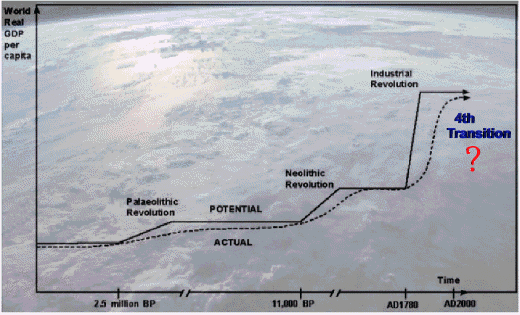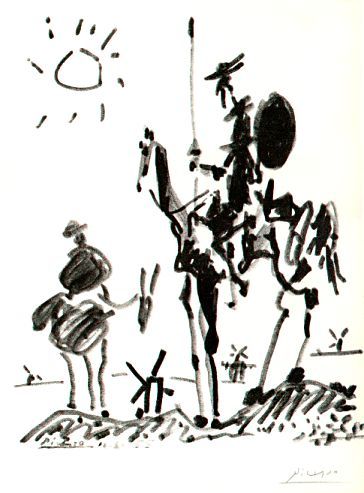|

While falling asleep one evening during the summer of 1995 (shortly after relocating to San Francisco), I thought of an intriguing phrase - "Gaian Buddhism." The phrase so thoroughly captivated my imagination that I went to the San Francisco Public Library the following day to research whether "Gaian Buddhism" had previously been used by someone else. To my surprise, I found that it was used as a chapter title in the book, Dharma Gaia.
After reading the book, I had an interesting idea: organize a group named the "Gaian Buddhist Society." I thought about the idea, discussed it with some friends, and researched the possibility of the viability of a "Gaian Buddhist Society." One notable result was a putative logo:  Further consideration, however, convinced me that the locution "Gaian Buddhist Society" included inherent difficulties; the semantic connotatons of both "Gaia" and "Bhuddism" were (it seemed to me) potentially emotionally provocative. Yet, by the following summer (1996), I thought of an alternative phrasing that seemed neutral regarding semantic emotional connotation: First Global Society. I subsequently convinced myself that "First Global Society" was a suitable nomenclature for what I had in mind.
I then embarked on an earnest effort to develop the idea. After several months, I managed to think of an interesting organizational structure. Included in my effort was research regarding similar organizations. I discovered that the Foundation for Global Community seemed to have an interest and orientation similar to what I was considering; so, I attended some of their meetings in Palo Alto. By the autumn of 1996, I had worked through the logistics of organizational design, and implemented a web site. At a Foundation for Global Community meeting in November, 1996, I made a brief announcement regarding my intent and efforts, accompanied by the following graphic summary:  I was unprepared for the reaction that followed; it seemed as if I had stirred up a hornets' nest. Consequently, I relinquished my participation at the Foundation for Global Community, but continued my efforts with First Global Society.
From 1997 to 2002, I devoted considerable time to developing some of the ideas portrayed in the above illutstration. Not surprisingly, things changed over time: the logo, for example:  Likewise, the form of the First Global Society web site changed over the years (although its content remained relatively constant):
The First Global Society web site is no longer active. Perhaps the most significant consideration in the First Global Society web site was the topic designated Which Future?. When I originally (circa 1995-1996) conceived of the idea of a Gaian Buddhist Society and (subsequently) First Global Society, it then seemed possible to me that Cosmic Evolution was a viable option for our future of our species. But I eventually (more realistically) expected that we should plan for Planetary Senescence (as explained below). Initially, the First Global Society was conceived as comprising two complementary aspects:
Within that conception, the 7th Generation Syndicate was conceived of as encompassing the active membership of the First Global Society, and Club Global Village its Internet-linked constituency. I later reformulated 7th Generation Syndicate and Club Global Village, respectively, as Global League and Global Ganglia. The relations are schematically depicted in the following illustration:  My conception of the 7th Generation Syndicate (Global League) and Club Global Village (Global Ganglia) was influenced by the explanation of identity articluated by Richard N. Adams in The Eighth Day (pp. 145-146):
My intent with the 7th Generation Syndicate (Global League) and Club Global Village (Global Ganglia) was to encourage an active membership whose identity included an encompassing "cosmic" consciousness and regard for the future of our planet (I've recognized a kindred awareness in Paul Harrison's Scientific Pantheism). But recruiting members has been a weak point with me. Over the years since I conceived of it, my initial objective of developing the First Global Society on a membership basis lagged. Nevertheless, in addition to my initial supposition of an active membership premised on identity, I had also considered the prospect of organizing a "discussion group" of about a dozen individuals to collaborate in better understanding our contemporary historical context. The germ of that idea is circled below:  Although I hadn't initially crystallized a detailed conception of what I initially intended with "understanding," the idea eventually acquired form as the Understanding in Time aspect of the First Global Society, represented in iconic form as: 
A recognizable influence on my formulation of Understanding in Time was Howard Bloom's chapter on Pythagoras (Chapter 16: PYTHAGORAS, SUBCULTURES, AND PSYCHO-BIO-CIRCUITRY, pp. 151-163) in his book The Global Brain. When considering Bloom's account of the Faustian introvert, I identified. Influenced by Bloom (and others), I considered assembling a group of individuals who I felt were suitably qualified to participate in a webinar via the Internet. During the subsequent years, I invested time and funds - purchasing books and organizing study materials. Understanding in Time eventually assumed the form of a putative three-part collaborative effort. The three “modules” were eventually designated:
The series content was comprised of both printed publications and online links. I acquired about a dozen copies of many of the listed publication titles that were intended for eventual use by "qualified" individuals participating in the series.
A principal challenge was to identify and interest potential participants. An initial Understanding in Time prospect was Timothy Wilken, who published the SynEarth blog. Timothy featured a discussion of Understanding in Time in the following: Understanding in Time.
One consequence of developing the schedule was my realization that a moderately paced implementation of Understanding in Time would likely require 3 years (possibly more) of time and effort by the participants. Who would have the motivation and interest - or time? Even though I had acquired copies of titles included in the Understanding in Time list, the 3-year estimate urged me to deliberate further over the detailed constitution of Understanding in Time.
 Despite various revisions, refinements and delays during the 5 years following my initial efforts with the First Global Society, I felt comfortable with the emerging result. However, the aftermath of 9-11 (September 11, 2001) appeared (to me) to have changed the global "rules of the game" that will determine the fate of human society on our planet. The U.S. "war on terror" and invasions of Afghanistan and Iraq, with the accompanying economic, political, and ecological consequences, convinced me that the future alternatives that I had conceived of in 1996 - Cosmic Evolution and Planetary Senescence - were probably no longer a valid dichotomy. By 2004, I'd concluded that what I had previously distinguished as Planetary Senescence will be our most likely future. Despite various revisions, refinements and delays during the 5 years following my initial efforts with the First Global Society, I felt comfortable with the emerging result. However, the aftermath of 9-11 (September 11, 2001) appeared (to me) to have changed the global "rules of the game" that will determine the fate of human society on our planet. The U.S. "war on terror" and invasions of Afghanistan and Iraq, with the accompanying economic, political, and ecological consequences, convinced me that the future alternatives that I had conceived of in 1996 - Cosmic Evolution and Planetary Senescence - were probably no longer a valid dichotomy. By 2004, I'd concluded that what I had previously distinguished as Planetary Senescence will be our most likely future. In the wake of 9-11, the First Global Society no longer seemed appropriate in view of the apparent reality of unfolding planetary geo-politics. After reconsideration, I concluded that yet another change in what was originally conceived as the Gaian Buddhist Society could likely prove appropriate. Subsequently, the First Global Society (intentionally) morphed into the 4th Transition Convention. Although much of the content from the First Global Society was retained, the form and objectives of the 4th Transition Convention were redefined. For example, the new web site for the 4th Transition Convention was redesigned to emphasize overshoot of the human population within the constraints of the finite physical parameters of our planet - represented in the following graphic:
 
One notable difference in the change from First Global Society to 4th Transition Convention was a changed emphasis regarding membership. An intital consideration for the First Global Society was to influence individual identity via membership models, as was intended with the Global League and Global Ganglia. With the 4th Transition Convention, however, a more fluid dynamic is envisioned, contingent on the varied definitions of "convention." Consider the definitions from the Encarta dictionary:
The 4th Transition Convention was not intended as a membership organization, but as a process. The process phases can be extrapolated from the preceding sequence of definitions for "convention:"
Your act of reading this narrarive is an instance of the 1st phase (awareness). My efforts with the 4th Transition Convention web site exemplified the 2nd phase.
In addition to the 4th Transition Convention web site, I was still interested in the prospect of (something like) a webinar with a group of qualified individuals.
This synopsis, like other things that I pursued for over two decades, was part of an on-going effort. Yet, on occasion, it seemed to me that I may have merely embarked on some sort of quixotic quest. Perhaps so; but then, who knows?
|
||||||||||||||||||||||||||||||||||||||||||||||||
|
|








